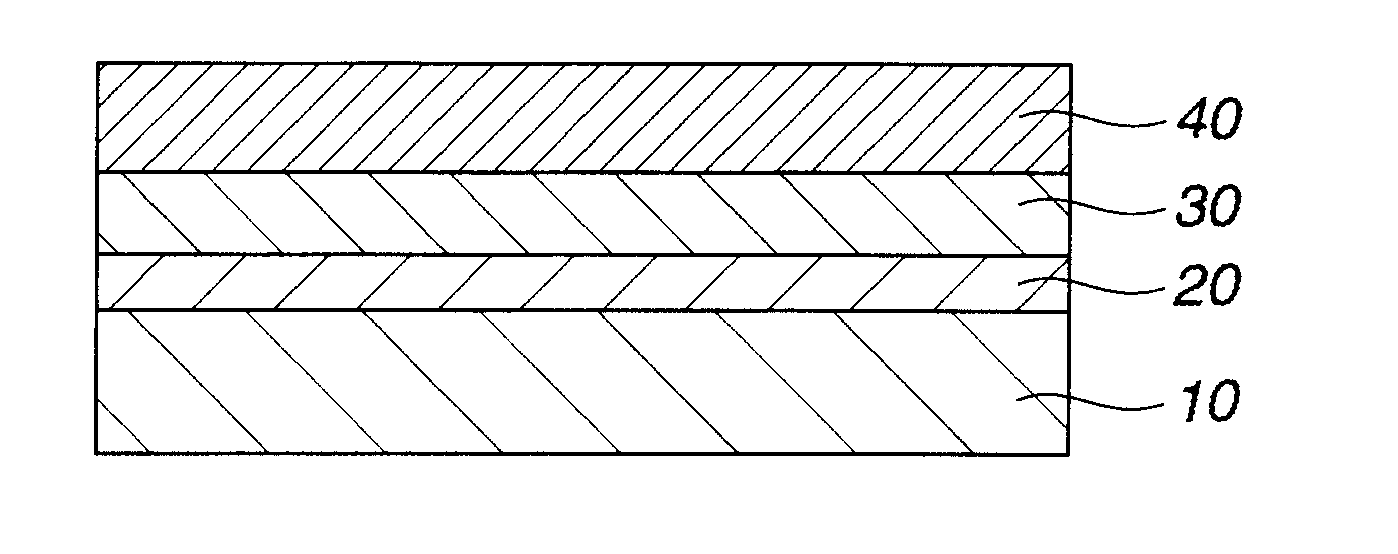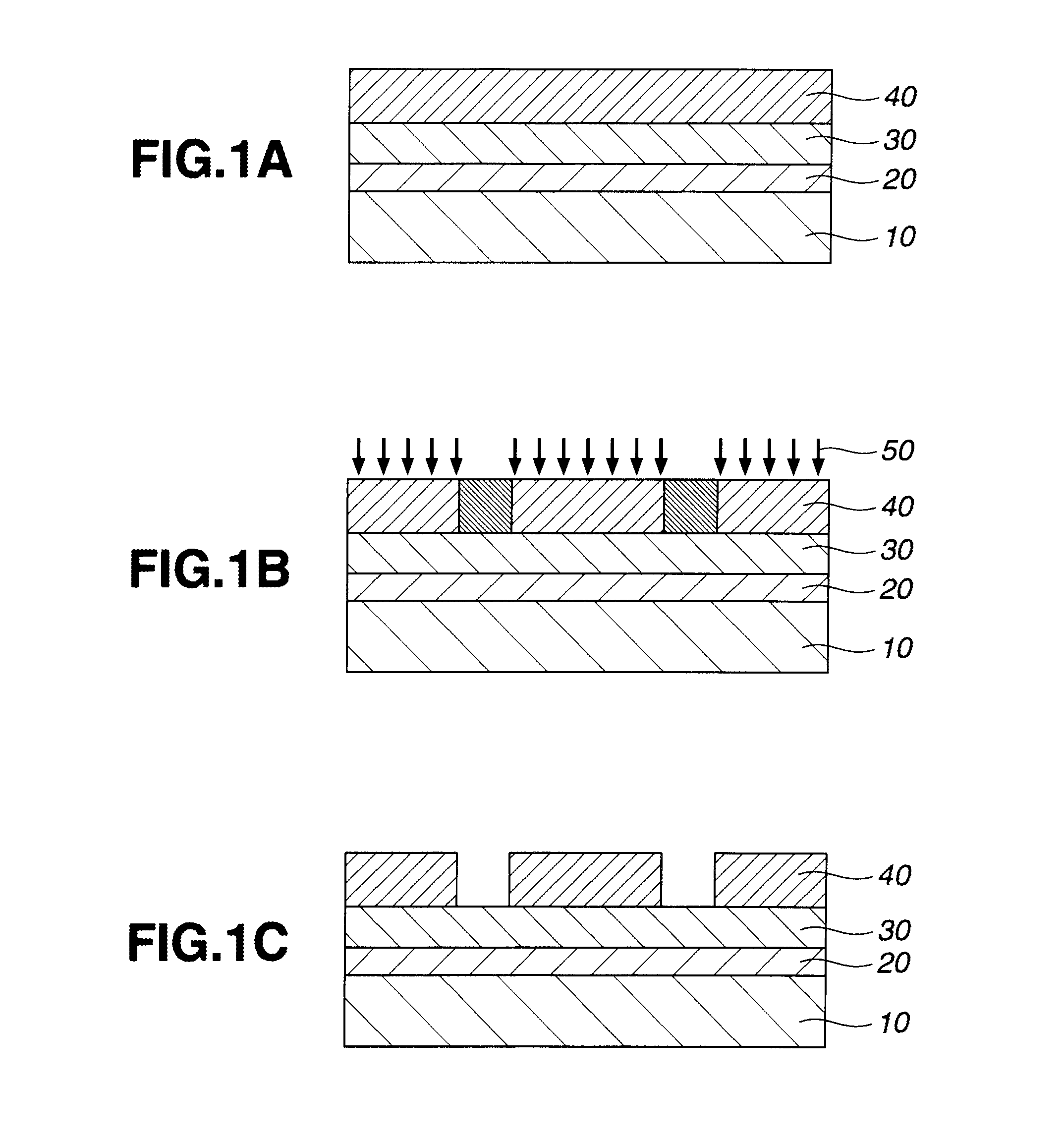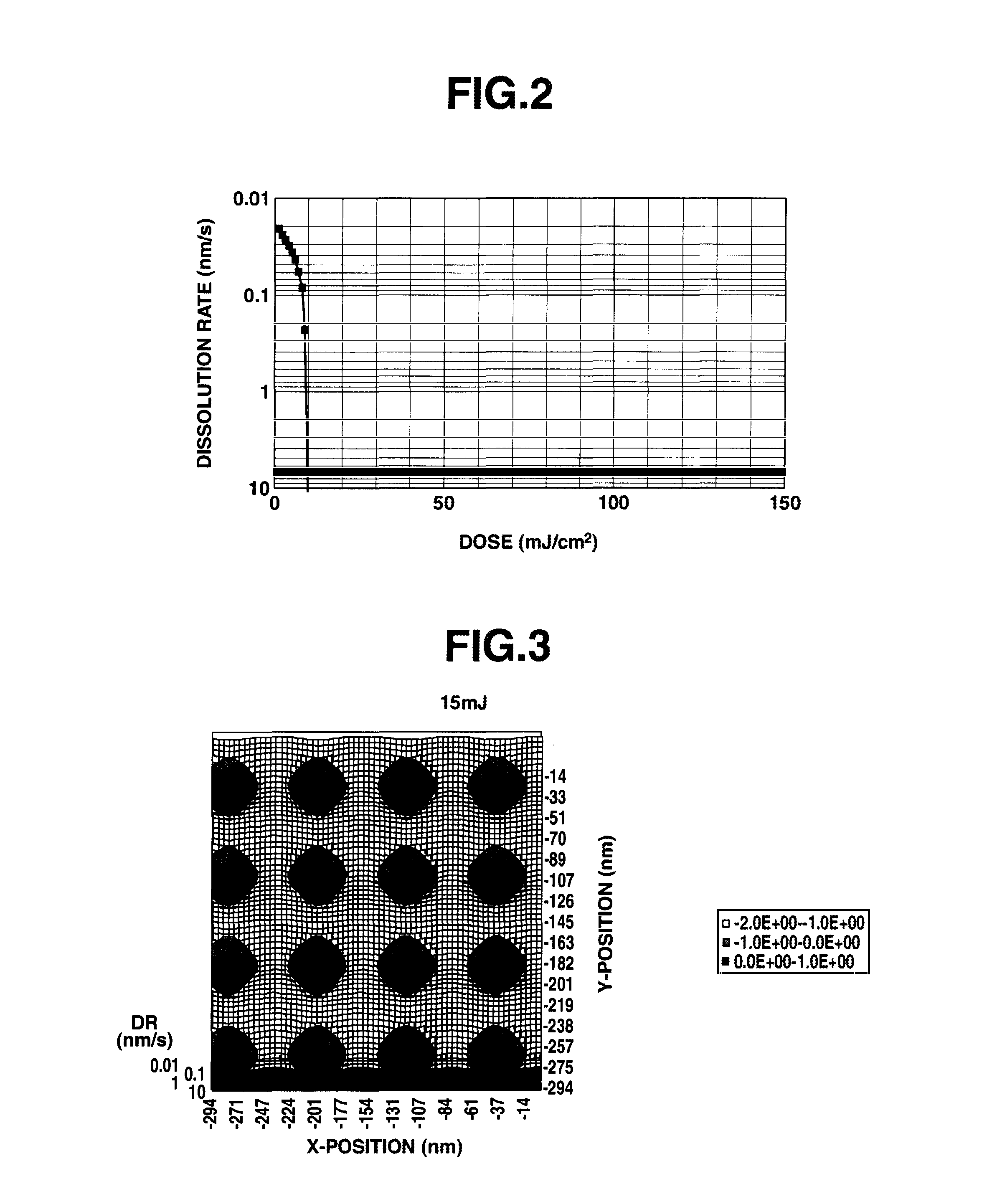Patterning process
- Summary
- Abstract
- Description
- Claims
- Application Information
AI Technical Summary
Benefits of technology
Problems solved by technology
Method used
Image
Examples
example
[0235]Examples of the invention are given below by way of illustration and not by way of limitation. For all polymers, Mw and Mn are determined by GPC versus polystyrene standards.
synthesis examples
[0236]Polymers to be added to resist compositions were prepared by combining various monomers, effecting copolymerization reaction in tetrahydrofuran medium, crystallization from methanol, repeatedly washing with hexane, isolation, and drying. The resulting polymers (Polymers 1 to 12) had the composition shown below. The composition of each polymer was analyzed by 1H-NMR, and the Mw and Mw / Mn determined by GPC.
Polymer 1
[0237]Mw=8,300
[0238]Mw / Mn=1.76
Polymer 2
[0239]Mw=8,800
[0240]Mw / Mn=1.77
Polymer 3
[0241]Mw=7,600
[0242]Mw / Mn=1.79
Polymer 4
[0243]Mw=8,300
[0244]Mw / Mn=1.92
Polymer 5
[0245]Mw=8,900
[0246]Mw / Mn=1.83
Polymer 6
[0247]Mw=7,300
[0248]Mw / Mn=1.81
Polymer 7
[0249]Mw=8,300
[0250]Mw / Mn=1.79
Polymer 8
[0251]Mw=9,300
[0252]Mw / Mn=1.93
Polymer 9
[0253]Mw=9,600
[0254]Mw / Mn=1.98
Polymer 10
[0255]Mw=9,600
[0256]Mw / Mn=1.98
Polymer 11
[0257]Mw=9,400
[0258]Mw / Mn=1.98
Polymer 12
[0259]Mw=9,400
[0260]Mw / Mn=1.98
Comparative Polymer 1
[0261]Mw=9,900
[0262]Mw / Mn=1.99
Preparation of Resist Composition
[0263]A resist solution was ...
PUM
 Login to View More
Login to View More Abstract
Description
Claims
Application Information
 Login to View More
Login to View More - R&D Engineer
- R&D Manager
- IP Professional
- Industry Leading Data Capabilities
- Powerful AI technology
- Patent DNA Extraction
Browse by: Latest US Patents, China's latest patents, Technical Efficacy Thesaurus, Application Domain, Technology Topic, Popular Technical Reports.
© 2024 PatSnap. All rights reserved.Legal|Privacy policy|Modern Slavery Act Transparency Statement|Sitemap|About US| Contact US: help@patsnap.com










